What is defensible space?
The following three figures explain what defensible space is and how to achieve it.
1
Defensible Space is Divided into Three Zones
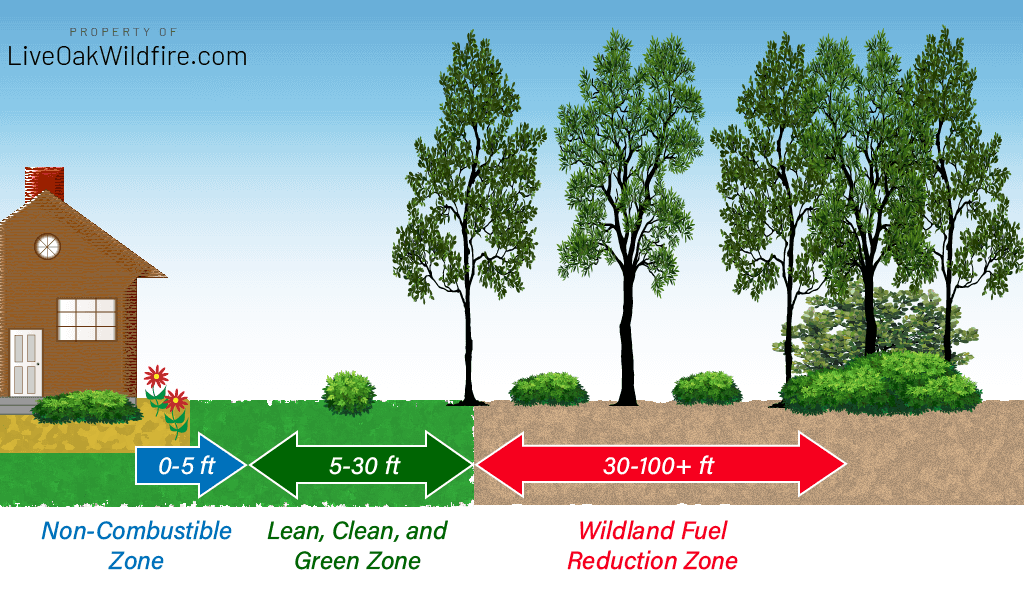
Non-Combustible Zone
The first 5 feet around your home and deck must be non-combustible. During a wildfire, wind driven burning embers hit the walls of a home and fall. What they fall on determines whether your home will ignite. You may have flowers or other well irrigated vegetation present, but none of these can be flammable. Ensure you clean under your decks, roofs, and in the gutters. Burning embers cause most home ignitions and this area near the home is where fires usually begin.
Lean, Clean, and Green Zone
The next 5 to 30 feet that extends from all homes, decks, and structures is considered the lean, clean, and green zone. This zone must be ranked annually. You may have some single isolated flammable native brush or mulch in this zone, but it cannot be continuous and lead to the home. You may have well-irrigated vegetation in this area, grass, flowers, and other succulent plants, but all the plants must be isolated.
Wildland Fuel
Reduction Zone
The next 30 to 100 feet that extends from all homes, decks, and structures is considered the Wildland Fuel Zone. In this area, the trees and brush must be thinned to prevent crown fire and reduce continuity of fuels. This area can look like a healthy forest.
2
Pine Needle Ranking
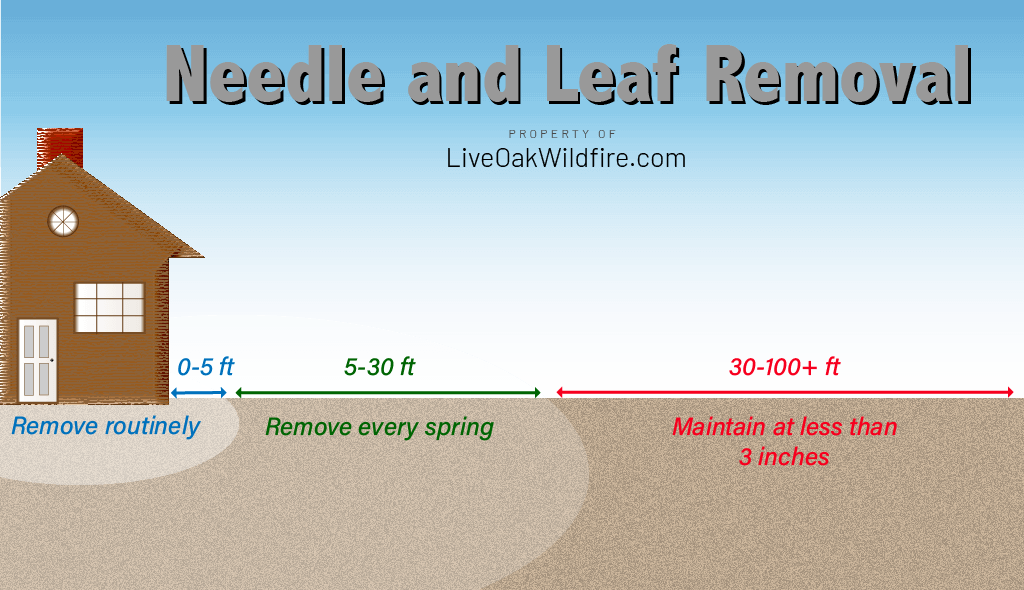
In the first five feet around your home (the non-combustible zone), you should rank pine needles and leaves routinely. Every spring, you must also rank the pine needles and leaves within 30 feet of your home (the lean, clean, and green zone). Finally, within the next 70 feet of your home (the wildland fuel reduction zone), rank the pine needles and leaves to maintain less than 3 inches of them. Pay close attention to pine needles under wooden steps, decks, roofs, and gutters. These pine needles are particularly susceptible to ignition from embers.
3
Brush Placement
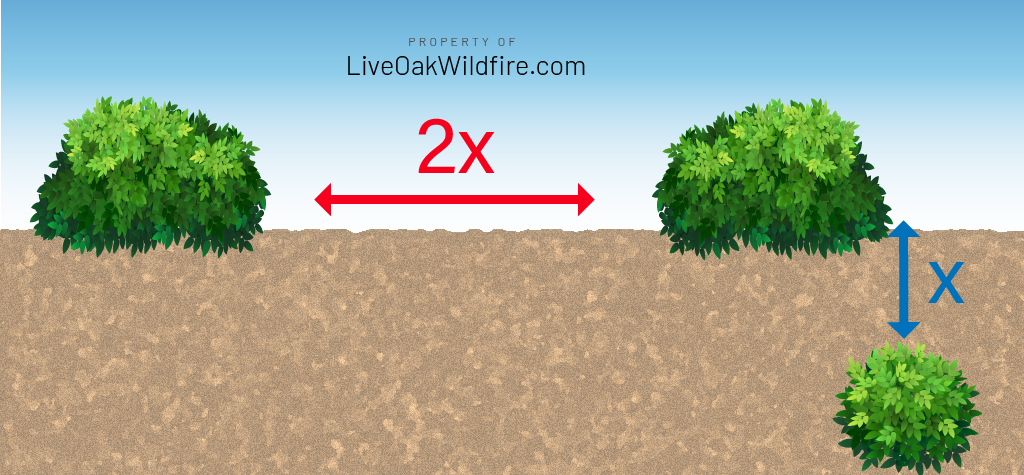
Brush should be strategically placed to limit the spread of fire. This is accomplished by creating islands of brush with a 6-foot radius, and creating 6-foot wide lanes between islands. It is very helpful to plant native bunch grass between the islands so that non-native weeds do not become established. There can only be isolated and very limited brush within 30 feet of your home. Non-native invasive plants frequently invade bare soil and are difficult to control.
4
Ladder Fuel Reduction
Ladder fuels are small, flammable, plants located under larger plants. For example, trees that aligned in increasing height pose a threat to carrying fires vertically.
You do not necessarily want to cut the large trees because overstory trees shade the ground and slow growth of flammable brush. Therefore, in order to minimize risk from ladder fuels, cut trees and brush from underneath the drip lines of larger trees.
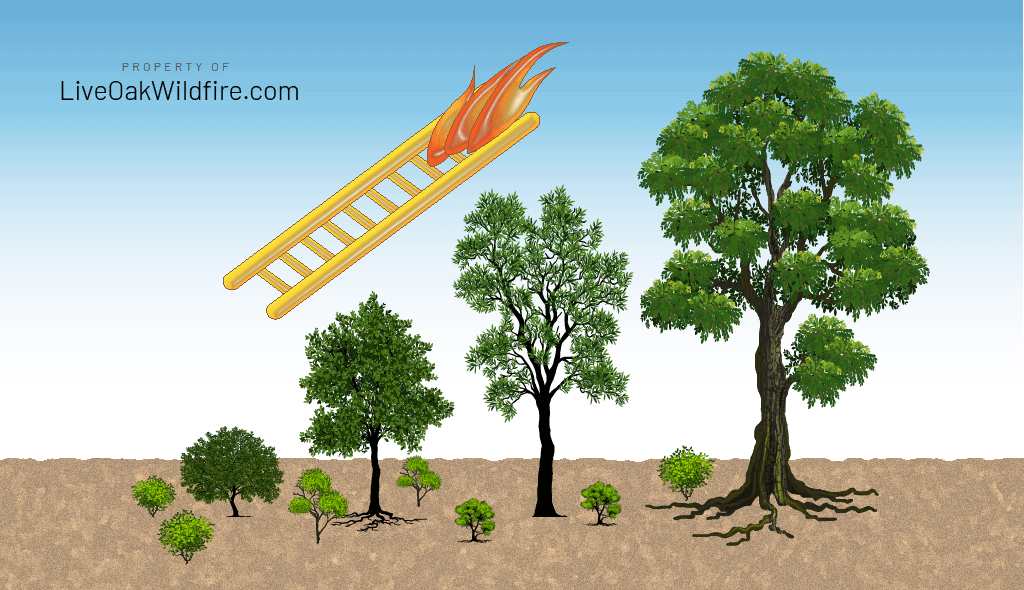
5
Vertical Spacing
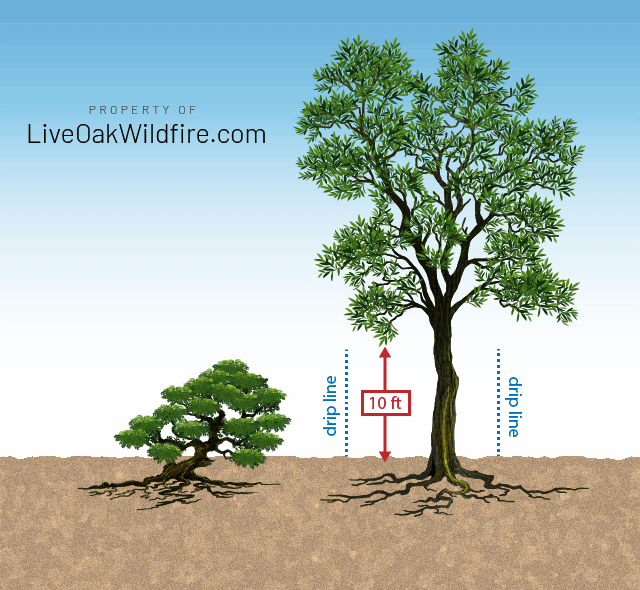
Pruning trees prevent fire from climbing into the canopy and can improve tree health. Trees should be pruned up to about 10 feet or 1/3rd tree height.
Also, prune branches within 10 feet of your structure. If doing so will damage the tree, then consider removing the tree entirely. Pruning too high can make a tree much more vulnerable to wind throw. Remove any brush or small trees from under the dripline of larger trees. If you have any questions, Live Oak Wildfire’s Registered Professional Forester, John Pickett (RPF#2976) can guide you through the process.
6
Horizontal Spacing
Trees should be spaced, on average, about 10 feet apart. Clumps of trees are permissible and many times protect each other from wind. Also, the shade they provide prevents excessive brush growth. Removing trees can be expensive, so it is best to have the trees evaluated by our registered professional forester, John Pickett, to determine the best course of action to achieve all the property owners’ goals.
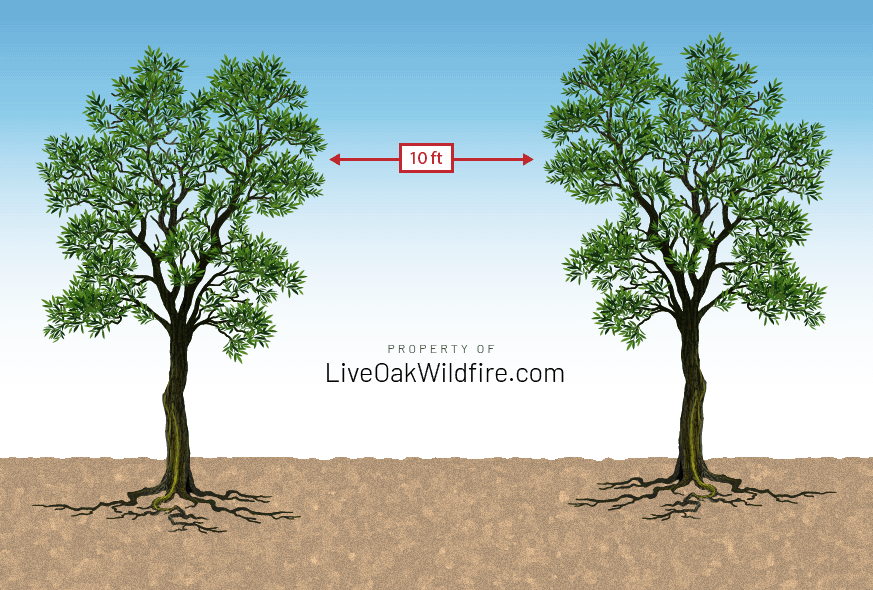
Live Oak Wildfire offers the following services:
- Defensible space consultations including forest health evaluation and tree removal permits
- Forest health and fire risk consulting
- Full process cut-to-length and whole tree logging
- Mobile chipping, while tree chipping and chip hauling
- Grant writing and financial policy and procedures development
- We have a solution no matter the complexity of the project!
Useful Links
Contact Us Today!
- 1-775-220-7675
- jpickettRPF@gmail.com

